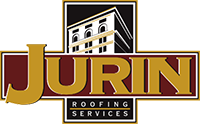How Much Snow Can My Roof Hold?
What a Major Snow Event Can Mean for Your Building
Here in the Northeast we commonly get weather forecasts that sort of go like this…
“A massive winter storm is heading this way and we’re expecting between 2 and 28 inches of snow or possibly rain. Stay tuned for more updates.”
Super helpful, right?

Whether the weather comes or goes, there actually are a few very important things you should be aware of… just in case the weather is guessed right.
How much does snow weigh?
First of all, you may not be aware that one foot of snow can weigh anywhere from 3 lbs. to 21 lbs. per square foot depending on the snow type. Add in a freeze/thaw/freeze cycle and you have a real scale tipper.
A building’s structure is only designed to hold a certain amount of load and when that load is exceeded, things can get scary quickly. Many property managers find themselves asking “how much snow can my roof hold?”

Even if snow accumulations don’t rack up to astonishing amounts, unbalanced loads can still create issues. An unbalanced load happens when drifting snow piles up in a centralized area. This can happen around large rooftop units, along walls or any number of other areas.
How can I tell if my roof has too much snow on it?
So what actually happens when your roof gets too much weight on it and becomes over-stressed? How can you tell if you might be in an unsafe environment? Here is a list of indicators that may mean you need to move to a safer place.
What do you do if you find any of these issues?
Remain calm and don’t panic. Evacuate the building as a precaution. It’s always better to be safe than sorry. Call your local emergency services provider such as the fire company.
Also you can call a licensed roofer with experience in snow removal and also a structural engineer to assess any damage. Licensed professionals understand the safety measures that need to be followed. They can make the call on whether or not it is safe to access the roof and begin removing the snow load.
It’s also worth noting that having the drains, gutters or scuppers cleared of snow is still a good idea after a large accumulation, even if it isn’t an emergency situation. Clearing these drainage points allows the melting snow to leave the roof system which helps get the weight off the roof.

The roofer will also clear paths to the drains and remove snow from around rooftop units. Caution must be taken when removing the snow so the membrane isn’t damaged.
Hopefully you won’t need to use any of this information though. Just remember to keep an eye out if the snow starts to pile up. Be safe, stay warm and happy snowman building!







